Redesigning WealthyPlanet's Website
Role
Lead Product Designer
Timeline
4 months
Tasks
User research, Interaction + Visual design, Design Systems, Product thinking
Tools
Figma, FigJam
Redesigning WealthyPlanet's Website
Role
Lead Product Designer
Timeline
4 months
Tasks
User research, Interaction + Visual design, Design Systems, Product thinking
Tools
Figma, FigJam
Overview
In Fall 2024, I joined WealthyPlanet, an early-stage fintech startup as their sole designer
Context
When I first joined WealthyPlanet, I had no clue on what to expect. This was the first time I would be a designer with no one else guiding me! I worked on a small team with developers as we all worked together on the same mission, to grow the company.
I arrived to a backlog of design work to be done, with existing files being poorly documented and a non-existent design system. I led the end-to-end redesign of the website, creating a user-friendly, intuitive platform. After the redesign, users reported higher confidence in navigating their financial planning journey, leading to increased sign-ups and greater trust in WealthyPlanet's services.
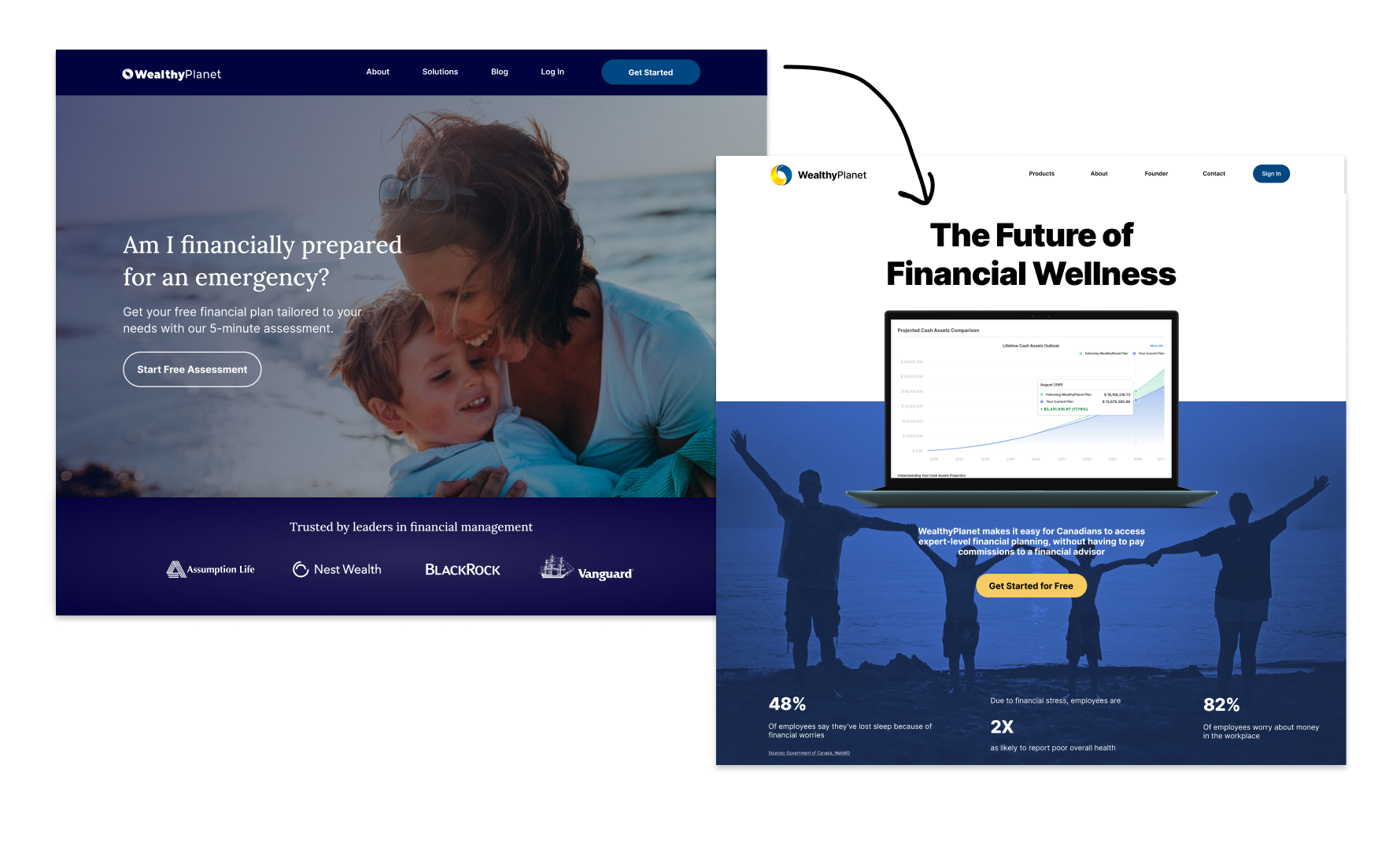
Understanding the space
WealthyPlanet had arelatability problem.
The existing website lacked clarity, engaging content, and essential functionality.
WealthyPlanet struggled to attract investors and clients after pivoting to an AI-powered financial planning product. Their website lacked clarity, engaging content, and interactive tools, making it hard for their core audience—middle-aged parents focused on retirement—to trust and engage with the platform.
Issues:
📉 Low User Conversion
🕰️ Outdated Design
🚫 Business Goals not Being Met
Competitive Analysis
I looked into research provided by WealthyPlanet to understand the problem to a deeper level. This made me realize this problem is bigger than anticipated, and how important user-centered design would be to help solve this problem.
48%
Of employees say they’ve lost sleep because of financial worries
Due to financial stress, employees are
2X
as likely to report poor overall health
82%
Of employees worry about money in the workplace
Source: Government of Canada
HMW Statement
How might we design a website that simplifies financial planning and builds trust with middle-aged parents seeking financial security for their family’s future?
Defining the Solution
Site Audit
To understand the problem to a deeper level, I conducted a site audit of the old website to highlight areas that needed to be fixed.
🚩 Inconsistent spacing, fonts, and colours
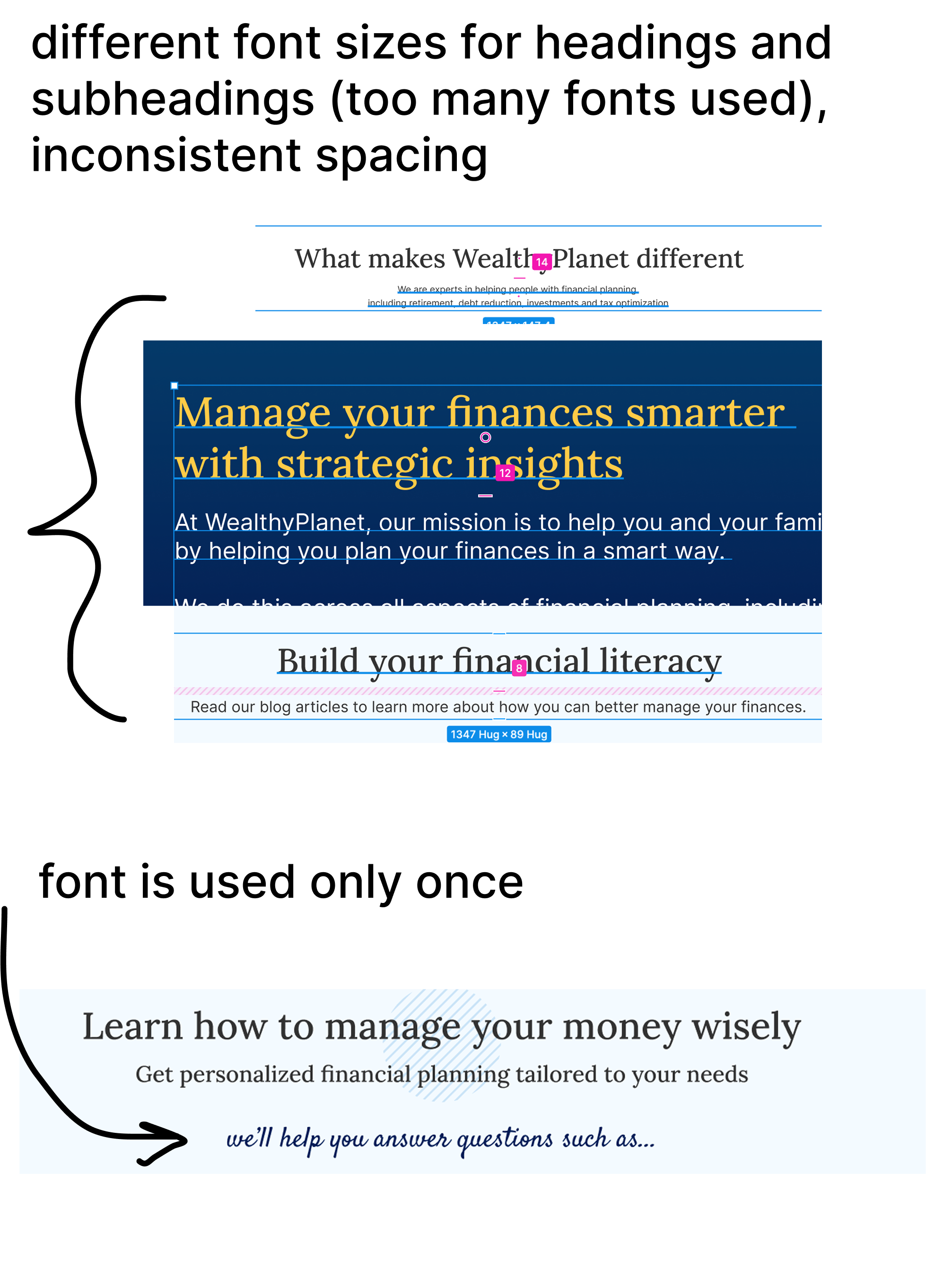
🚩 Does not explain what the company/product is on landing page
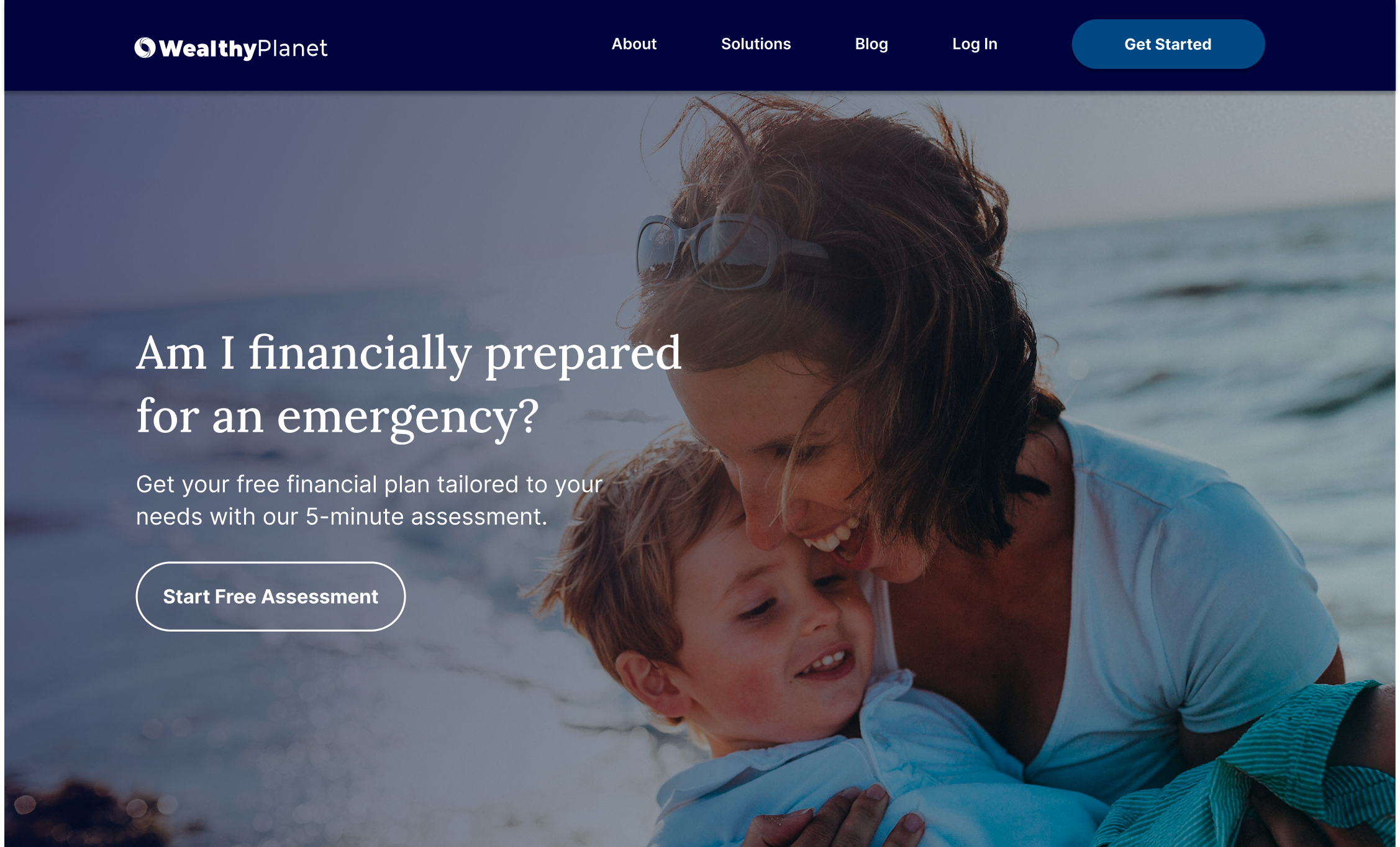
🚩 Usability Issues and Poor Navigation
Old site had buttons that lead to no where -> does not establish trust with site visitors.
Old site had a broken site for it’s mobile view
Mapping a User's Journey Through the Site
From the site audit, and market research, I knew the most important things to focus on were usability, engagement and trust.
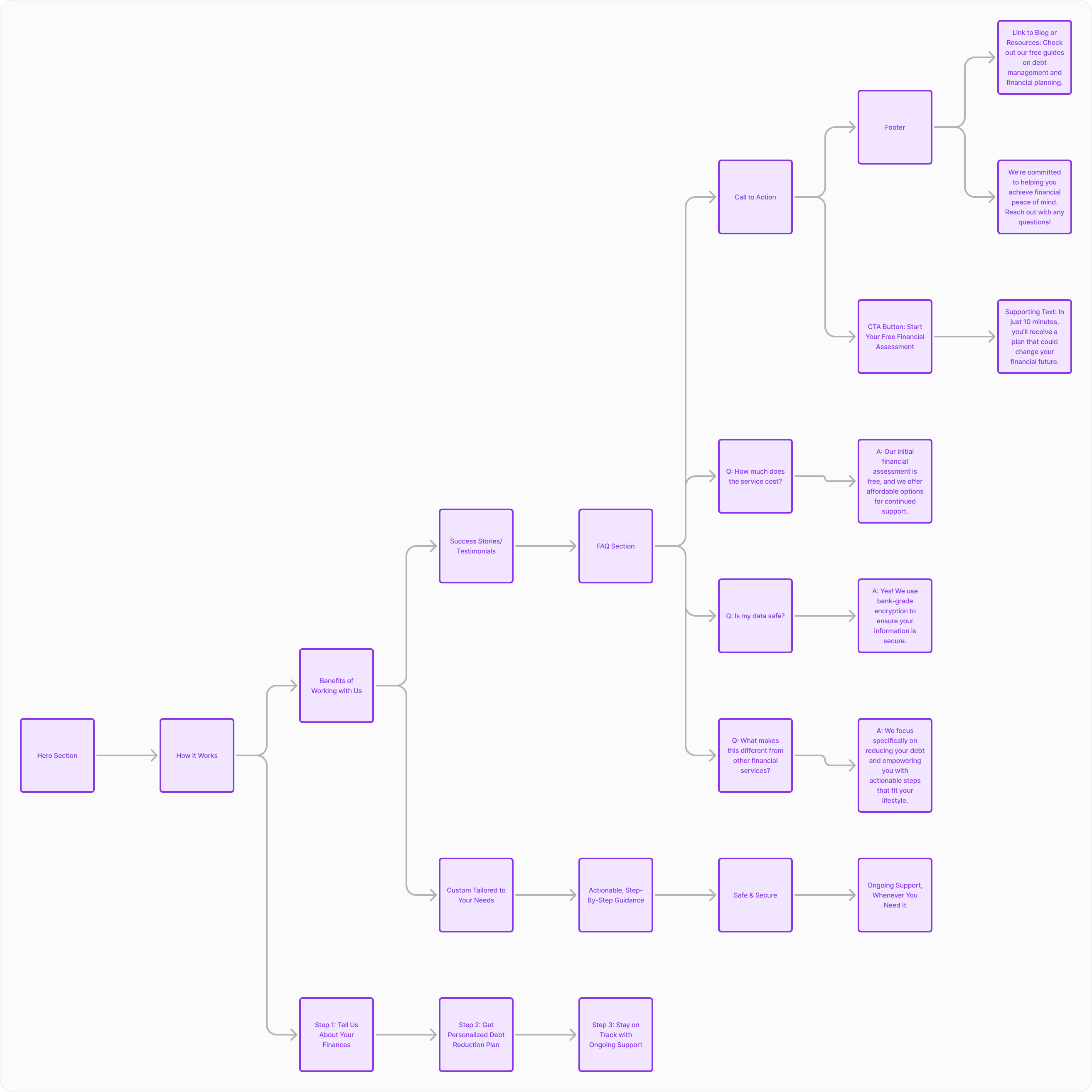
I started off the UI design process by creating a design system
Before getting started on any tasks, I audited the existing WP Figma to see what was there. There were some design files, but no concrete design system to work out from. So, I set up the foundation for the rest of my term there.
I looked through old branding material the company had and turned HEX codes into Figma styles to be used, with slight tweaks. The team wanted to use Tailwind CSS as their primary form of styling, as well as keep some colours from their original branding.
Low & Medium Fidelity Prototypes
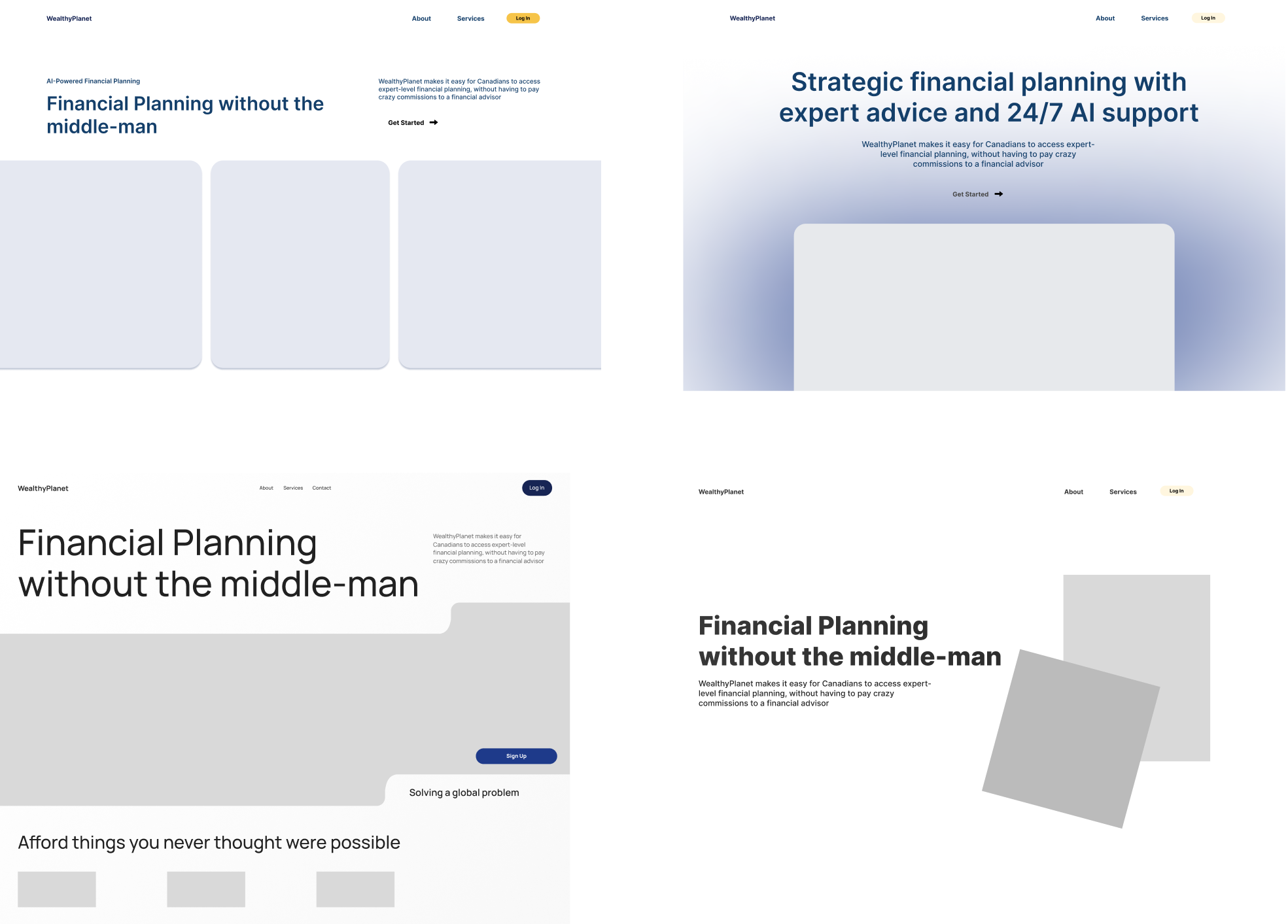
A key message the design should convey is trust. Since there was not much WealthyPlanet could do to prove trust to users since it's an early-stage startup, a tested way I found to do so is by adding statistics
I also looked into come competitor sites I thought were cool, and got inspiration for my next round of prototypes.
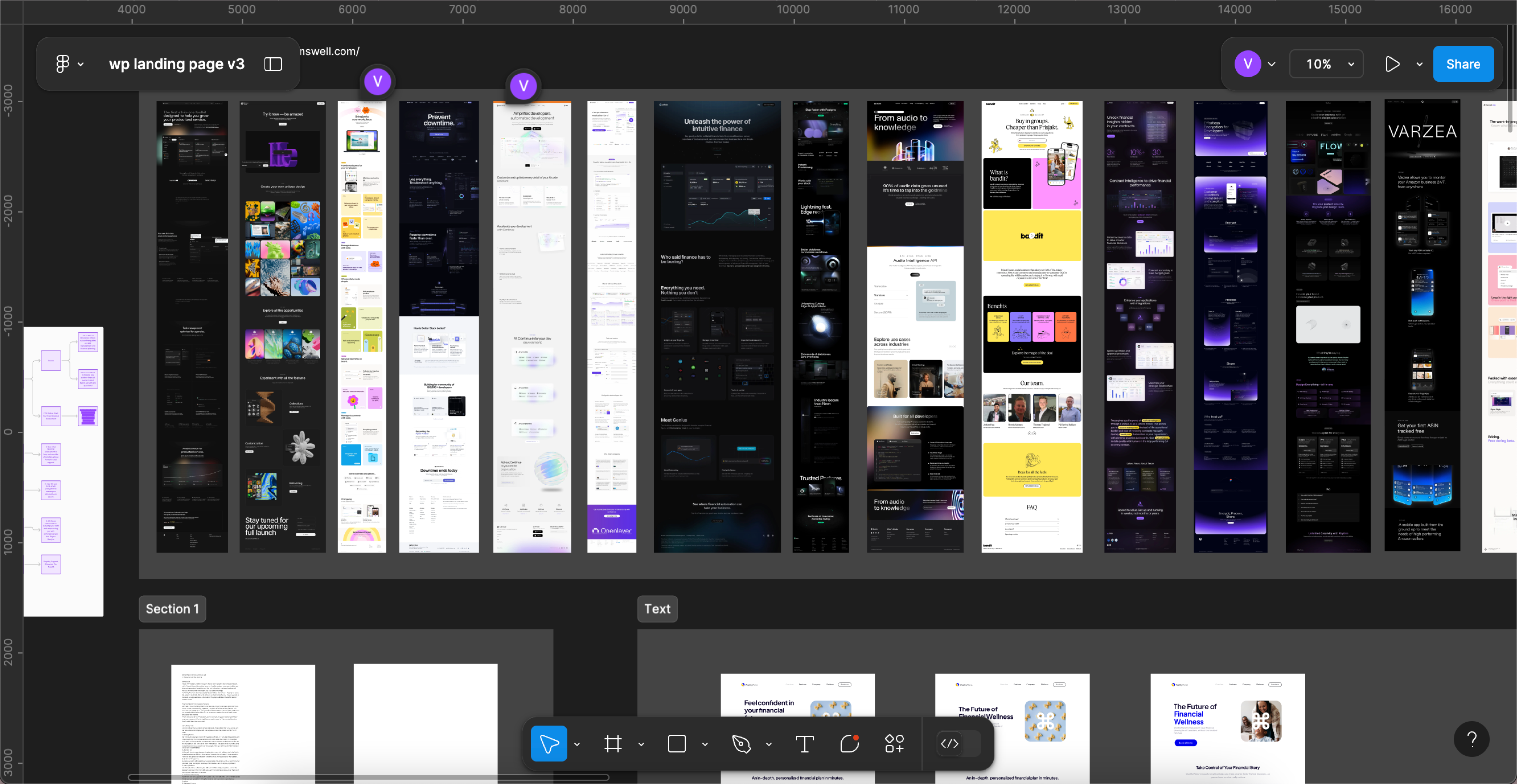
I did another round of prototypes and conducted usability testing
Figma Link Loading! Might take a few seconds
Insights from Usability Testing
Knowing how the app functions and steps work section should be expanded out, embedding chatbot onto the site
Match the brand colours and colours of the app, needed to implement the design system
Using language to convey information to B2B2C stakeholders.
Iterating on the Final Design
Figma Link Loading! Might take a few seconds
With each design iteration, I focused on refining adding colour, refining sections such as the hero section and intro video, adding micro-animations where needed, and removing elements for a clean UI.
Results and Takeaways
Engagement
Increased user sign-ups by 270% in the first month post-launch.
Retention
Users spending 20% more time on the website.
Trust
Received positive feedback on usability and approachability in follow-up surveys.
Overall, this was a great experience for me to learn to be a better independant designer. I learnt the importance of ownership in my work, and how truly valuable design systems are.
More coming, very soon ☺️